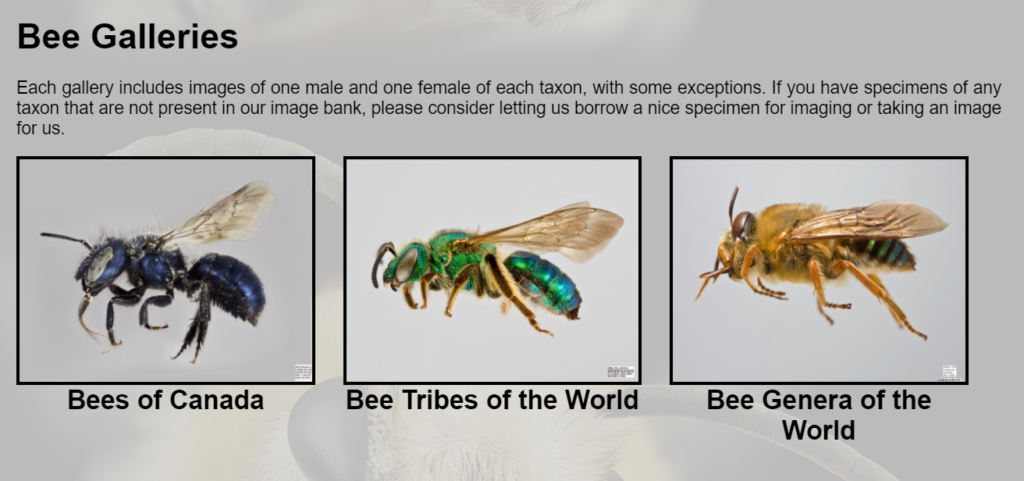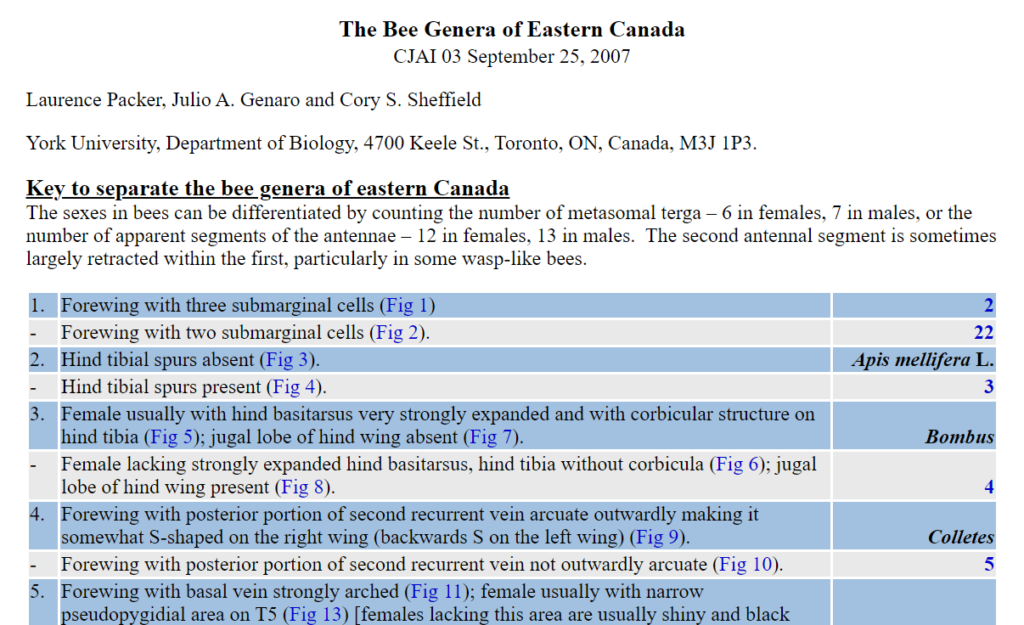Interested in knowing more about bee identification? With over 20,507 (or so) species identified and loads still awaiting description, how do you identify one bee from the next? The best way is to use a dichotomous key. This is a method of identification in which a series of questions narrow down the potential species, often using morphological features (body parts, relative sizes, etc). You could also begin by simply exploring the diversity of bees using the Packer Lab's Bee Galleries. Find links to these resources below:

Each gallery includes images of one male and one female of each taxon, with some exceptions. If you have specimens of any taxon that are not present in our image bank, please consider letting us borrow a nice specimen for imaging or taking an image for us.
This image database is as complete as we can make it. We are approaching various researchers to assist us with filling in the gaps. As can easily be seen, some of the specimens used are not exactly in good condition. If you have nice specimens that might fill in the gaps or enable us to replace.

The Centre for Bee Ecology, Evolution and Conservation's founding member Laurence Packer, along with Julio A. Genaro and Cory S. Sheffield, developed the publicly available "The Bee Genera of Eastern Canada". In this key, the 39 genera of bees found in Canada east of Manitoba are keyed in dichotomous format with all key features illustrated. Habitus photographs of males and females of representatives of all genera are provided. The biology of bees in general, and outlines of the biology of each genus are summarized.
